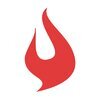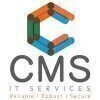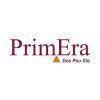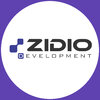Filter interviews by
Neovatic Technologies Interview Questions and Answers
17 Interview questions
An inspection plan is a document that outlines the steps and criteria for inspecting a product or process.
It includes information on the inspection characteristics, sampling procedures, and acceptance criteria.
Inspection plans are used in quality management to ensure that products meet the required standards.
They can be created for individual products or for a group of similar products.
Inspection plans can be crea...
PLD. ORD refers to planned order while PRD. ORD refers to production order.
PLD. ORD is a tentative order created to meet the demand while PRD. ORD is a confirmed order to produce the required quantity.
PLD. ORD is created in the planning stage while PRD. ORD is created in the execution stage.
PLD. ORD does not have any material reservation while PRD. ORD has material reservation.
PLD. ORD can be converted to PRD. ORD...
BOM status refers to the current state of a Bill of Materials in a manufacturing process.
BOM status indicates whether a BOM is active or inactive.
It can also indicate whether a BOM is released for production or still in development.
BOM status can affect production planning and inventory management.
Examples of BOM status include 'released', 'obsolete', 'under development', and 'inactive'.
Repetitive and discrete are two types of manufacturing processes in SAP PP module.
Repetitive manufacturing is used for producing high volume, low variety products.
Discrete manufacturing is used for producing low volume, high variety products.
Repetitive manufacturing uses a production line with a fixed sequence of operations.
Discrete manufacturing uses a bill of materials (BOM) to define the components needed for e...
MIC stands for Material Identification and Control.
MIC is a process in SAP PP/QM module that ensures the correct identification and control of materials used in production.
It involves assigning unique identification numbers to materials and tracking their usage throughout the production process.
MIC helps in maintaining quality standards and preventing errors or mix-ups in production.
It also helps in traceability a...
Integration between PP, MM, SD, FICO, and QM in SAP.
PP creates production plan based on sales orders from SD and material availability from MM.
QM ensures quality control during production process and inspects finished products.
FICO manages financial aspects of production and sales.
MM manages procurement of raw materials and inventory management.
SD manages sales orders and customer data.
BOM group is a classification of BOMs based on their usage and characteristics.
BOM group is used to group similar BOMs together.
It helps in managing and maintaining BOMs efficiently.
BOM group can be used for planning, costing, and production purposes.
Examples of BOM groups are engineering BOM, production BOM, sales BOM, etc.
Control parameters of MRP include lot size, safety stock, reorder point, and planning horizon.
Lot size determines the quantity of material to be produced or procured in one go.
Safety stock is the buffer stock maintained to meet unexpected demand or supply chain disruptions.
Reorder point is the inventory level at which a new order is triggered.
Planning horizon is the time period for which MRP is planned.
Scheduling parameter is a setting that determines the timing and frequency of a process or task.
Scheduling parameters are used in SAP PP to control the production process.
They can be used to set the start and end dates of a production order.
They can also be used to determine the frequency of a recurring task, such as a quality inspection.
Examples of scheduling parameters include start date, end date, lead time, an...
The org structure of SAP PP includes plant, storage location, work center, routing, and production version.
Plant is the highest level in the org structure
Storage location is a sub-level of plant
Work center is a sub-level of storage location
Routing is a sub-level of work center
Production version is a sub-level of routing
Neovatic Technologies Interview Experiences
4 interviews found
Interview Questionnaire
18 Questions
- Q1. What is the org structure of sap pp.
- Ans.
The org structure of SAP PP includes plant, storage location, work center, routing, and production version.
Plant is the highest level in the org structure
Storage location is a sub-level of plant
Work center is a sub-level of storage location
Routing is a sub-level of work center
Production version is a sub-level of routing
- Q2. What is mrp
- Ans.
MRP stands for Material Requirements Planning, a system used to plan and control inventory levels and production schedules.
MRP helps in determining the quantity and timing of raw materials required for production.
It considers factors like lead time, demand, and inventory levels to create a production plan.
MRP is a key component of SAP PP module and helps in optimizing production processes.
It helps in reducing inventory...
- Q3. What is sop
- Ans.
SOP stands for Standard Operating Procedure, which is a documented procedure that outlines steps to be followed in a specific process.
SOPs are used to ensure consistency and quality in processes
They are often used in industries such as manufacturing, healthcare, and food service
SOPs can include step-by-step instructions, safety precautions, and quality control measures
Examples of SOPs include a cleaning procedure for a...
- Q4. What is scheduling parameter
- Ans.
Scheduling parameter is a setting that determines the timing and frequency of a process or task.
Scheduling parameters are used in SAP PP to control the production process.
They can be used to set the start and end dates of a production order.
They can also be used to determine the frequency of a recurring task, such as a quality inspection.
Examples of scheduling parameters include start date, end date, lead time, and cyc...
- Q5. What is backflushing
- Ans.
Backflushing is a process in SAP PP/QM where the system automatically issues materials to a production order upon completion of the order.
Backflushing is used to reduce manual data entry and improve efficiency.
It is commonly used in industries such as manufacturing and assembly.
The system automatically calculates the quantity of materials used based on the bill of materials (BOM) and issues them to the production order...
- Q6. What are the control parameter of mrp
- Ans.
Control parameters of MRP include lot size, safety stock, reorder point, and planning horizon.
Lot size determines the quantity of material to be produced or procured in one go.
Safety stock is the buffer stock maintained to meet unexpected demand or supply chain disruptions.
Reorder point is the inventory level at which a new order is triggered.
Planning horizon is the time period for which MRP is planned.
- Q7. What is the difference between repetitive and discrete
- Ans.
Repetitive and discrete are two types of manufacturing processes in SAP PP module.
Repetitive manufacturing is used for producing high volume, low variety products.
Discrete manufacturing is used for producing low volume, high variety products.
Repetitive manufacturing uses a production line with a fixed sequence of operations.
Discrete manufacturing uses a bill of materials (BOM) to define the components needed for each p...
- Q8. What bom group
- Ans.
BOM group is a classification of BOMs based on their usage and characteristics.
BOM group is used to group similar BOMs together.
It helps in managing and maintaining BOMs efficiently.
BOM group can be used for planning, costing, and production purposes.
Examples of BOM groups are engineering BOM, production BOM, sales BOM, etc.
- Q9. What is bom status
- Ans.
BOM status refers to the current state of a Bill of Materials in a manufacturing process.
BOM status indicates whether a BOM is active or inactive.
It can also indicate whether a BOM is released for production or still in development.
BOM status can affect production planning and inventory management.
Examples of BOM status include 'released', 'obsolete', 'under development', and 'inactive'.
- Q10. What is group and group counter
- Ans.
Group and group counter are used in SAP PP to group similar materials and operations.
Group is a classification of materials or operations based on common characteristics.
Group counter is a numerical identifier assigned to each group.
Groups can be used for planning, scheduling, and reporting purposes.
For example, materials with similar properties can be grouped together for easier management.
Similarly, operations with s...
- Q11. What is the difference between pld. ord and prd. ord.
- Ans.
PLD. ORD refers to planned order while PRD. ORD refers to production order.
PLD. ORD is a tentative order created to meet the demand while PRD. ORD is a confirmed order to produce the required quantity.
PLD. ORD is created in the planning stage while PRD. ORD is created in the execution stage.
PLD. ORD does not have any material reservation while PRD. ORD has material reservation.
PLD. ORD can be converted to PRD. ORD afte...
- Q12. What is bom usage
- Ans.
BOM usage is a classification of how a Bill of Materials (BOM) is used in a production process.
BOM usage determines the purpose of a BOM in a production process.
It can be used for production, costing, or engineering purposes.
Examples of BOM usage include production BOM, costing BOM, and engineering BOM.
Production BOM is used for manufacturing finished goods, while costing BOM is used for calculating the cost of a produ...
- Q13. What is the integration between pp , mm ,sd ,fico and qm.
- Ans.
Integration between PP, MM, SD, FICO, and QM in SAP.
PP creates production plan based on sales orders from SD and material availability from MM.
QM ensures quality control during production process and inspects finished products.
FICO manages financial aspects of production and sales.
MM manages procurement of raw materials and inventory management.
SD manages sales orders and customer data.
- Q14. What is mic
- Ans.
MIC stands for Material Identification and Control.
MIC is a process in SAP PP/QM module that ensures the correct identification and control of materials used in production.
It involves assigning unique identification numbers to materials and tracking their usage throughout the production process.
MIC helps in maintaining quality standards and preventing errors or mix-ups in production.
It also helps in traceability and re...
- Q15. What is inspection plan
- Ans.
An inspection plan is a document that outlines the steps and criteria for inspecting a product or process.
It includes information on the inspection characteristics, sampling procedures, and acceptance criteria.
Inspection plans are used in quality management to ensure that products meet the required standards.
They can be created for individual products or for a group of similar products.
Inspection plans can be created i...
- Q16. What is demand management
- Ans.
Demand management is the process of forecasting, planning, and managing the demand for products or services.
It involves analyzing historical data and market trends to predict future demand
It helps in optimizing inventory levels and production schedules
It ensures that the right products are available at the right time and in the right quantity
It involves collaboration between sales, marketing, and production teams
Exampl...
- Q17. What is the difference between stock requirements list and mrp list
- Ans.
Stock requirements list and MRP list are two different reports used in SAP PP module.
Stock requirements list shows the current stock levels and future requirements for a material.
MRP list shows the planned procurement proposals for a material based on the current stock levels and future requirements.
Stock requirements list is used for monitoring stock levels and planning production, while MRP list is used for procureme...
- Q18. What is milestone confirmation
- Ans.
Milestone confirmation is a process of confirming the completion of a significant event or stage in a project or production process.
Milestones are predetermined checkpoints in a project or production process
Confirmation involves verifying that the milestone has been achieved
Milestone confirmation helps to track progress and identify potential delays
Examples of milestones in production process include completion of a sp...
Interview Preparation Tips
Skills evaluated in this interview
I applied via Walk-in and was interviewed before Jan 2021. There were 3 interview rounds.

(2 Questions)
- Q1. About subject will ask well and good questions
- Q2. If experience candidate means will ask about projects in depth and etc
(5 Questions)
- Q1. What is your family background?
- Ans.
I come from a close-knit family that values education and hard work, which has greatly influenced my career choices.
My father is an engineer, which inspired my analytical skills.
My mother is a teacher, instilling in me the importance of education.
I have a younger sister who is pursuing her studies in computer science.
Family gatherings are frequent, fostering strong relationships and support.
- Q2. What are your salary expectations?
- Q3. Why are you looking for a change?
- Q4. Where do you see yourself in 5 years?
- Q5. Tell me about yourself.
Interview Preparation Tips
- SAP SD
- And which module u belongs to.
Interview Questionnaire
2 Questions
- Q1. Basic questions about Sap Cloud What is Cloud Integration
- Q2. About java and Html css
I applied via AmbitionBox
Interview Questionnaire
2 Questions
- Q1. Technical rounds
- Q2. About SAP
Interview Preparation Tips
Top trending discussions






Interview questions from similar companies

I applied via Referral and was interviewed before Jul 2021. There were 2 interview rounds.
Basic data annotation questions
(1 Question)
- Q1. Question related to the project
Interview Preparation Tips

Intern Interview Questions & Answers
Quantiphi Analytics Solutions Private Limitedposted on 22 Nov 2021
I applied via Walk-in and was interviewed before Nov 2020. There was 1 interview round.
Interview Questionnaire
9 Questions
- Q1. Tell me about yourself
- Q2. Process details
- Q3. Company information
- Q4. Tell me about yourself
- Q5. Process details
- Q6. Company information
- Q7. Tell me about yourself
- Q8. Process details
- Q9. Company information
Interview Preparation Tips

I applied via Naukri.com and was interviewed before Jun 2020. There was 1 interview round.
Interview Questionnaire
1 Question
- Q1. Financial domain
Interview Preparation Tips

I applied via Campus Placement and was interviewed before Mar 2021. There were 4 interview rounds.
90 minute test on hacker rank consisting of 3 coding questions all of medium difficulty. Most candidates are required to solve more than 1 question.
(3 Questions)
- Q1. Questions on concepts of OOPS and Operating Systems.
- Q2. Find least common ancestor of a binary tree.
- Ans.
Find the lowest common ancestor of a binary tree.
Traverse the tree recursively from the root node.
If the current node is null or matches either of the given nodes, return the current node.
Recursively search for the nodes in the left and right subtrees.
If both nodes are found in different subtrees, return the current node.
If both nodes are found in the same subtree, continue the search in that subtree.
- Q3. Find first missing positive integer from an array for non-negative integers.
- Ans.
Find first missing positive integer from an array of non-negative integers.
Create a hash set to store all positive integers in the array
Loop through the array and add all positive integers to the hash set
Loop through positive integers starting from 1 and return the first missing integer not in the hash set
(1 Question)
- Q1. Design a parking lot
- Ans.
Design a parking lot
Consider the size and capacity of the parking lot
Decide on the layout and organization of parking spaces
Implement a system to manage parking availability and reservations
Include features like ticketing, payment, and security
Consider scalability and future expansion
(2 Questions)
- Q1. Given a grid which represents an ocean( For all index i,j if mat[i][j] = 1 is island and mat[i][j] = 0 means water). Find the island with largest area.
- Ans.
Find the largest island area in a grid representing an ocean using DFS or BFS.
Use Depth-First Search (DFS) or Breadth-First Search (BFS) to explore the grid.
Mark visited cells to avoid counting them multiple times.
Count the size of each island during the traversal.
Example: For a grid [[1,0,0],[1,1,0],[0,0,1]], the largest island has area 3.
Keep track of the maximum area found during the exploration.
- Q2. Given list of strings group them into distinct anagrams.
- Ans.
Group list of strings into distinct anagrams.
Create a hash table with sorted string as key and list of anagrams as value.
Iterate through the list of strings and add each string to its corresponding anagram list in the hash table.
Return the values of the hash table as a list of lists.
Interview Preparation Tips
- Low Level Design
- Object Oriented Programming
- Data Structures
- Algorithms
- DBMS
Skills evaluated in this interview

Intern Interview Questions & Answers
Quantiphi Analytics Solutions Private Limitedposted on 4 Jul 2022
I applied via Campus Placement and was interviewed before Jul 2021. There were 2 interview rounds.
Standard Aptitude topics, 30 mins - 30 questions
(2 Questions)
- Q1. Case Study for how to design a data Lake ? standard questions - tell me about yourself, why us
- Q2. Case Study for how to design a chess game
- Ans.
Designing a chess game involves defining rules, user interface, and game mechanics for an engaging experience.
Define the rules: Standard chess rules include piece movement, check, checkmate, and stalemate.
User interface: Create a visually appealing board and pieces, with options for 2D or 3D views.
Game mechanics: Implement turn-based play, timers, and difficulty levels for AI opponents.
Multiplayer options: Allow for on...
Interview Preparation Tips
- SQL
- Java

I appeared for an interview in Aug 2021.

(1 Question)
- Q1. What you do and how you can sell the product to customer
- Ans.
I understand the customer's needs and demonstrate how our product can meet those needs, highlighting its unique features and benefits.
Listen actively to the customer's needs and concerns
Explain how our product can solve their problems or meet their needs
Highlight the unique features and benefits of our product
Provide examples of how our product has helped other customers
Address any objections or concerns the customer m...
Interview Preparation Tips
Neovatic Technologies Interview FAQs
Tell us how to improve this page.
Interview Questions for Popular Designations
- Software Engineer Interview Questions
- Software Developer Interview Questions
- Senior Associate Interview Questions
- Senior Engineer Interview Questions
- Graduate Engineer Trainee (Get) Interview Questions
- Accountant Interview Questions
- Data Analyst Interview Questions
- Senior Software Engineer Interview Questions
- Show more
Interview Questions from Similar Companies
Neovatic Technologies Reviews and Ratings
based on 45 reviews
Rating in categories
|
SAP MM Consultant
27
salaries
| ₹1.5 L/yr - ₹10.2 L/yr |
|
Associate Consultant
24
salaries
| ₹2.5 L/yr - ₹6.2 L/yr |
|
SAP SD Consultant
19
salaries
| ₹7.5 L/yr - ₹14 L/yr |
|
SAP Abap Consultant
18
salaries
| ₹3 L/yr - ₹12.6 L/yr |
|
SAP Fico Consultant
16
salaries
| ₹6.2 L/yr - ₹22.7 L/yr |

CMS IT Services

iMerit

Quantiphi Analytics Solutions Private Limited

PrimEra Medical Technologies
- Home >
- Interviews >
- Neovatic Technologies Interview Questions








